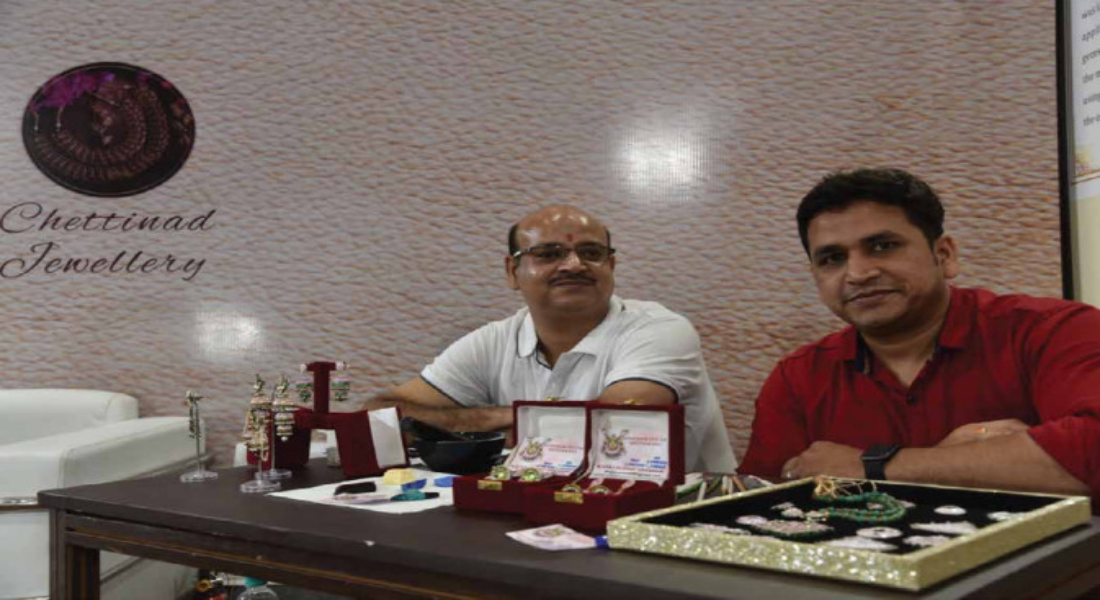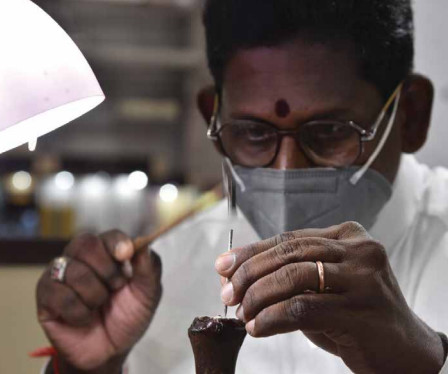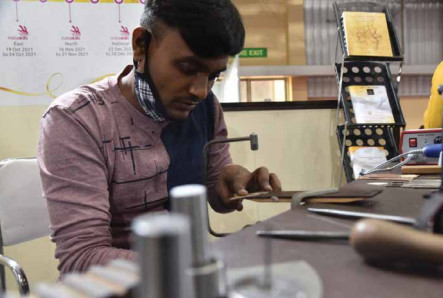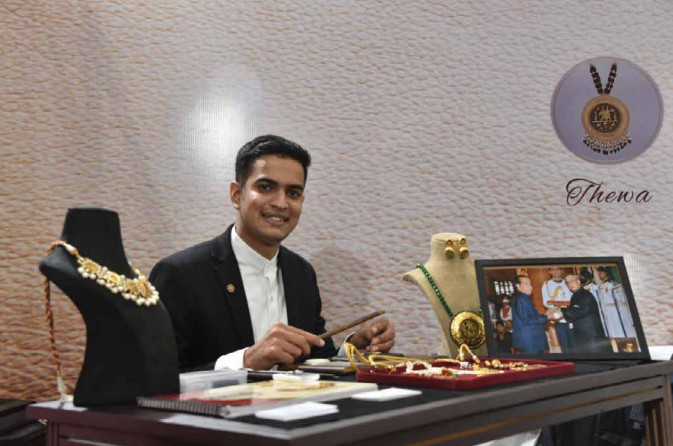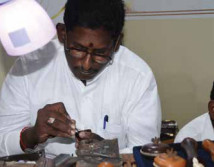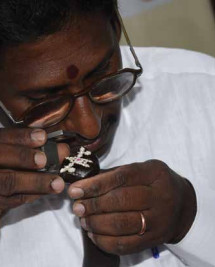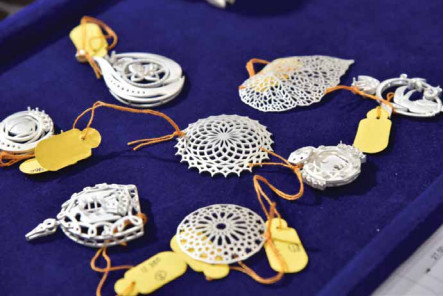This year, the Gem & Jewellery Skill Council of India (GJSCI) in its endeavour to retain and upgrade the time honoured jewellery making crafts shines light on Thewa, Benarasi Meena and Chettinad Jewellery. Artisans who specialise in these categories are on the show floor to help one get a better understanding of the painstaking detailing that goes into the creation of timeless pieces.
Gulabi Minakari is one of the rarest crafts in India that is practiced in the bylanes of Varanasi, near Gai Ghat. Minakari is an art form from Persia and involves colouring the surface of metals by fusing different colours. This art was brought to the city of Varanasi by Persian enamellists during the Mughal era around the early 17th century. The word ‘mina’ is the feminine form of the Persian word ‘Minoo’ and means ‘heaven’. It refers to the azure colour of heaven.
In Varanasi, minakari is practiced on jewellery and home decor items. One can also buy souvenirs like birds and elephants decorated with minakari. It shows most beautifully on gold as its natural sheen sets off the colours at their best. Thus, one can shop for products with minakari work on them like jewellery boxes, idols, sculptures, key chains, dining sets, trays, cupboards, etc.
Minakari work uses very simple tools like salai (an etching tool), kiln, metal palette, mortar and pestle, kalam (a tool used to apply enamel), brass dye, small scrubbing brush, forceps and takala (a needle-like tool to apply colours). Minakari can be found popularly in three forms– Ek Rang Khula Meena in which only gold outlines are exposed and a single transparent colour is used; Panch Rangi Meena in which the five colours of red, white, green, light blue and dark blue are used; Gulabi Meena in which pink is the dominant colour. Varanasi is highly popular for Gulabi Minakari.
To pick up exciting, designoriented pieces. Fancy colour diamonds play an important role over in mid-ticket items which are dictated by fresh designs. Retailers in India have done a fantastic job in educating end consumers about colour diamonds, and buyers are excited to learn about their rarity and colours on offer.
“In the high-end market, consumers around the world want the best. Consumers today are knowledgeable and thanks to the digital explosion, they are aware of top jewellery brands, who do have an inventory of exceptional pieces set with Fancy Colour diamonds. This has inspired even consumers in the domestic market to venture into this category. There is a lot of interest and excitement about Fancy Colour diamonds, and demand for one-off pieces is only rising.”
Chettinad jewellery is an essential part of South Indian weddings, where each piece of jewelry embraces its own story. Originating from the Chettinad region from Tamil Nadu, Chettinad jewellery depicts temple jewellery designs that were inspired by the grand architectural temples built by dynasties like the Cholas. The presence of region’s history is so well depicted in the jewellery that the goldsmith’s master skill is worth all the admiration. Of all, the most prominent types of Chettinad jewellery is gold necklace designs, that are mostly traditional and handcrafted.
One of the classic and statement pieces of the Chettinad jewellery is the magnificent coin necklace. The coins usually bear motifs of gods and goddesses like Lakshmi, Ganesha and so on that adds a divine touch to the jewellery.
Thewa is a special art of jewelry making which involves fusing of intricately workedout sheets of 23-kara gold on multi-coloured and specially processed molten glass. The art evolved in Pratapgarh district of Rajasthan, but its origin dates back to the Mughal age. The word Thewa is word derived from Rajasthani language meaning `Setting’. The process of making Thewa jewellery is detailed, time-consuming and intricate, and it can take up to a month to complete a single piece. Unlike other jewelry / adornments, its designs revolve around events and stories. Geographical Indications authority has been awarded to the famous Thewa Art of Rajasthan’s Pratapgarh district.

